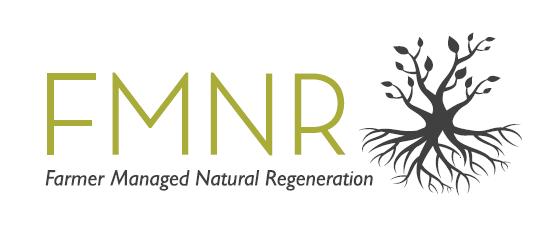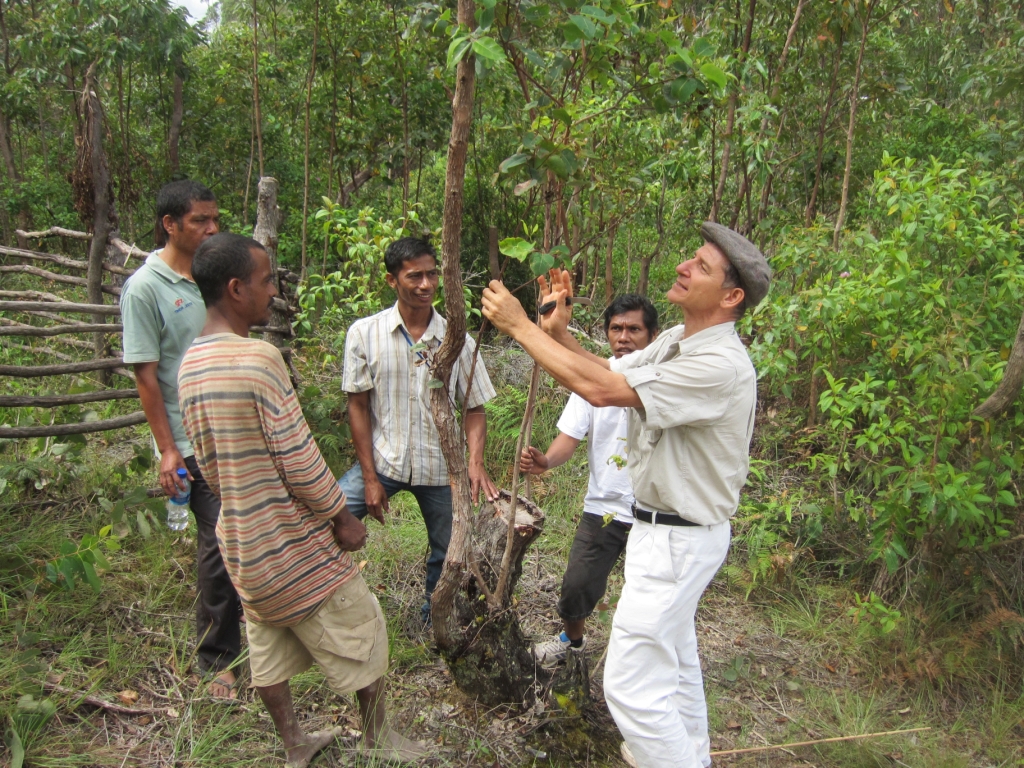 In many parts of Africa, poverty, unsustainable farming practices and fast-growing populations have turned once-productive farmlands and forests into virtual deserts where crops now fail three years in five.
In many parts of Africa, poverty, unsustainable farming practices and fast-growing populations have turned once-productive farmlands and forests into virtual deserts where crops now fail three years in five.
Farmer-managed natural regeneration (FMNR) is a low-cost land restoration technique used to combat poverty and hunger amongst subsistence farmers by increasing food and timber production and resilience to climate extremes.
In practice, FMNR involves the systematic regrowth and management of trees and shrubs from felled tree stumps, sprouting root systems or seeds. The regrown trees and shrubs – integrated into crops and grazing pastures – help restore soil structure and fertility, inhibit erosion and soil moisture evaporation, rehabilitate springs and the water table and increase biodiversity. Some tree species also impart nutrients such as nitrogen into the soil.
As a result FMNR can double crop yields, provide building timber and firewood, fodder and shade for livestock, wild foods for nutrition and medication and increased incomes and living standards for farming families and their communities.
Across the Sahel region of Africa, FMNR is diversifying diets through a greater range of crops and the collection of wild foods. Because of FMNR, Niger produces an extra 500,000 tonnes of grain annually – enough to feed 2.5 million people. It has also restored six million hectares of farmland. In northern Ghana, a burnt-out, barren landscape in now being recovered. Forest has grown to 1-3 meters tall in just two years, producing food, livestock fodder and wild foods.
In Senegal, FMNR has transformed 50,000 hectares of farmland and doubled crop yields in just three years. In southern Ethiopia, a barren mountain has been reforested and the community is now reaping financial benefits through the sale of carbon credits.
With increased incomes, families become more resilient against drought and flood and are able to afford healthcare and send their children to school. Entire communities benefit economically.
As FMNR is community-led and requires the involvement of regulators and governments to ensure land and tree ownership, communities are building their networking and negotiation skills. They are also developing new business structures.
FMNR Hub: a global resource for reforestation projects
The Farmer Managed Natural Regeneration (FMNR) Hub within World Vision Australia’s Food Security and Climate Change team leads and fosters the development of FMNR globally through coordination, collaboration, communication, building evidence and science, and project fundraising.
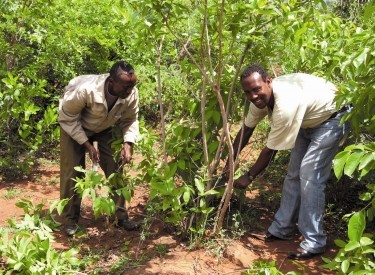 East Africa: proven evidence-based solution for chronically food insecure regions
East Africa: proven evidence-based solution for chronically food insecure regions
Vast areas of East Africa have become so degraded that they no longer sustain agriculture. Yet, more than 70 percent of the population are subsistence farmers relying on this degraded resource base for their food and livelihoods. Farmer-managed natural regeneration (FMNR) is a cost-effective sustainable agriculture system which yields rapid, large-scale results: providing timber for building, cooking and heating, restoring degraded soils and helping communities adapt to climate change. This project aims to reforest five million hectares over five years in Ethiopia, Kenya, Tanzania and Uganda with the support of national governments and of the World Agroforestry Centre. (read more)
 Ethiopia: A community-led carbon project in the voluntary market, with social benefits
Ethiopia: A community-led carbon project in the voluntary market, with social benefits
World Vision Australia has partnered with World Vision Ethiopia to restore and protect the high montane forest on the slopes of Mt Damota, in this highlands of southern Ethiopia. The project involves local Soddo communities in environmental training and education programs, site rehabilitation, forest establishment, job creation initiatives and collaboration with the zonal government. Through a combination of tree planting and natural regeneration to reestablish the natural ecosystem, the project intends to sell carbon credits in order to guarantee its long-term sustainability. (read more)
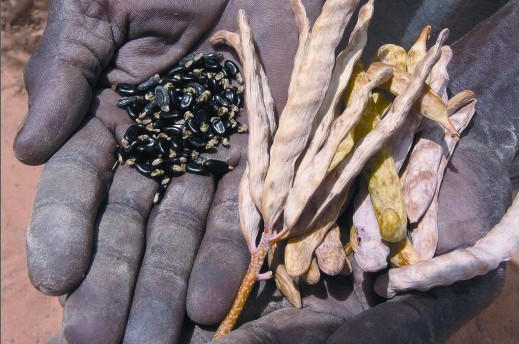 Sub-Saharan Africa: nutritious Australian energy food supporting life in the harshest African environments
Sub-Saharan Africa: nutritious Australian energy food supporting life in the harshest African environments
The seeds of certain Australian Acacia species have historically formed a part of the traditional diets of Australian Aborigines. The sub-tropical, arid and semi-arid climate of parts of Australia corresponds with many parts of the world that are subject to periodic or chronic famine, such as the Sahelian zone of Sub-Saharan Africa. Certain Acacia species from Australia’s hot, dry regions can withstand a high level of drought, thriving under adverse conditions in which annual plants barely survive. The seeds are tasty, safe to consume and nutritious. This makes Acacia ideal for increasing reliable access to food in Africa and reducing poverty through the sale of its seeds. (read more)
 Senegal: ensuring food security in a changing climate
Senegal: ensuring food security in a changing climate
The Beyastol (Work the Land) project realised the adoption of FMNR on over 50,000 hectares of farmland within a four-year period. The successful pilot project in the Kaffrine and Diourbel regions was a response to increasing levels of food insecurity and poverty, linked to severe deforestation and resultant land degradation. Following the failure of conventional reforestation approaches, despite great persistence and investment, FMNR was introduced to local farmers. Their initial resistance was quickly replaced by enthusiasm as the benefits of FMNR became apparent. The project is now being scaled up. (read more)
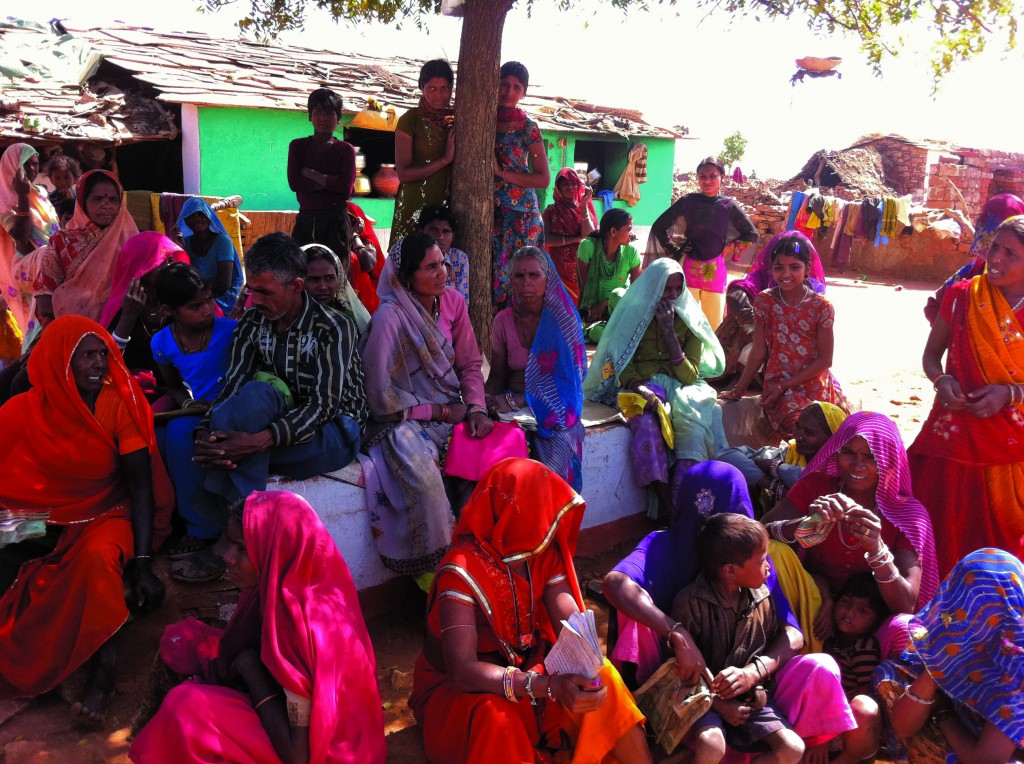 India: enhanced energy and food security building resilience to climate change
India: enhanced energy and food security building resilience to climate change
In India up to 40 percent of the population has no access to electricity. In particular, rural communities are reliant on inefficient energy sources – wood and cow dung for cooking, diesel and kerosene for lighting, and diesel for day-to-day agricultural applications, including water pumps and irrigation systems. This project aims to reduce the energy burden of approximately 2,000 households across 15 villages. This is being done through transforming communities’ traditional energy use to renewable and energy efficient technology. Using a holistic approach, a range of technologies and techniques will be introduced to meet the energy needs of entire villages as well as methods to regenerate surrounding areas of land that were once forested. (read more)
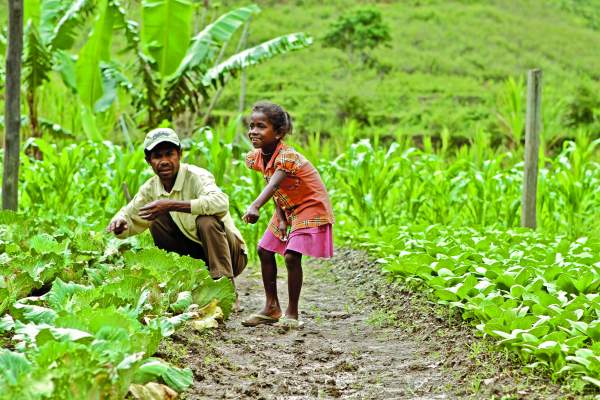 Timor-Leste: an integrated landscape approach to food insecurity and climate change
Timor-Leste: an integrated landscape approach to food insecurity and climate change
The BRACCE Project is an integrated project focussing on restoring the environment in Aileu District East Timor. The District is highly deforested, eroded, and degraded and one of the most vulnerable districts to climate change in East Timor. Project staff are working with communities to reassert their control over local land and bring the land back to productivity by practicing FMNR. Along with restoring the environment, the project seeks to improve income through wood sales from regenerated FMNR areas, and eventually increased fruit and timber sales from agro-forestry activities. BRACCE is also supported by integrated programing in nutrition, WASH, and in cash crop development, helping to ensure long term development in Aileu District. (read more)
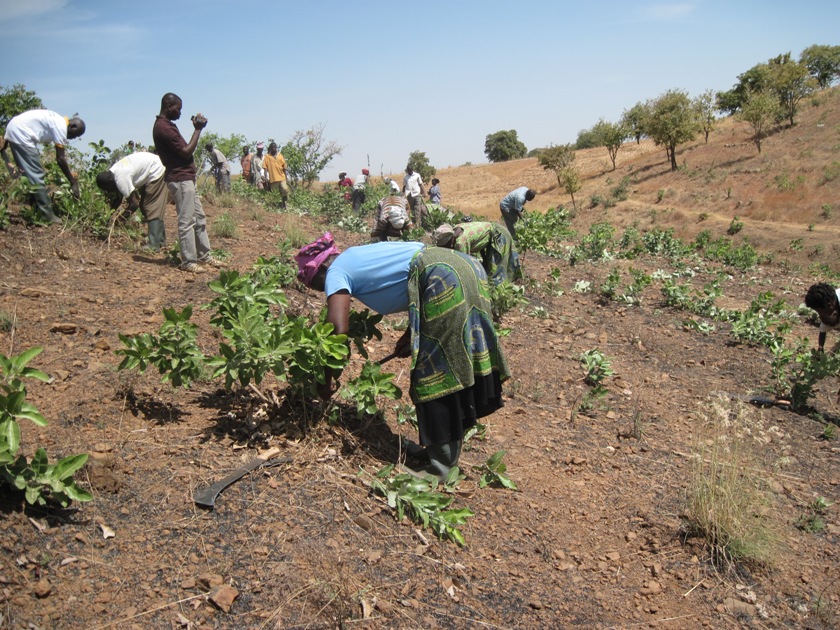 Ghana: farmer-managed natural regeneration
Ghana: farmer-managed natural regeneration
The Talensi farmer-managed natural regeneration FMNR project was a pioneering collaboration between World Vision Australia and World Vision Ghana. In the long-term, the project aimed to improve the livelihoods of people in the Talensi Area Development Program by increasing income levels and the number of households with food all year round. In order to achieve this goal, the project encouraged farmers to adopt sound natural resource management practices. These practices aimed to rebuild household resilience by reversing losses in forest cover, indigenous biodiversity and soil fertility. The project succeeded in achieving high levels of FMNR adoption and tangible livelihood improvements. (read more)
